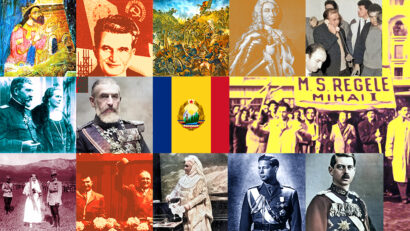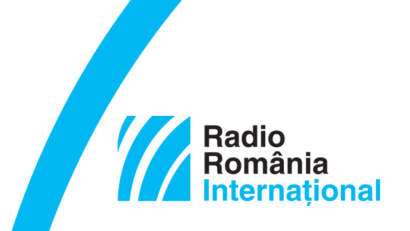Centennial of the Romanian Orthodox Patriarchate
In 2025, the Romanian Orthodox Church marks 100 years since its elevation to the rank of Patriarchate

Steliu Lambru, 17.02.2025, 14:00
In 2025, the Romanian Orthodox Church marks 140 years since the recognition of its Autocephaly (April 25th, 1885) and 100 years since its elevation to the rank of Patriarchate (February 4th, 1925). We talked with the historian Dragoș Ursu from the National Museum of the Union in Alba Iulia to find out details about the symbolic significance of the centennial: “After the unions of 1918 of Bessarabia, Bukovina and Transylvania, we were in another church register in which the Romanian Orthodox Church, the Romanian Orthodoxy, was the most relevant. At least that was the case from a quantitative point of view and not only at that time, because we know that in Soviet Russia there was an ongoing process of repression of the Church, the Russian Church being almost abolished. Thus, the Romanian Orthodoxy was the strongest at that time and, first of all, the question of church unification arose. At the time, in 1918, after the formation of Greater Romania, we had four different church traditions: the Kingdom, the Metropolitan Bishopric of Transylvania, the Metropolitan Bishopric of Bukovina, which belonged to the Austrian side of the Austro-Hungarian dualism, and the Metropolitan Bishopric of Bessarabia, subject to a Russification process for more than 100 years. Somehow, all four of these traditions had to be brought together. It was a process that ran successfully for six years, ending in 1925. Along with the church unifications there arose the issue of proclaiming the Romanian Patriarchate, a church of such magnitude, with more than 15 million believers, which, at that time, was the most vigorous Orthodox church, I would say, if we consider our local patriotism. The ecumenical patriarchate was under pressure from the Turks, the new Turkish republic, and the Russian Church was under pressure from the Soviet state. Thus, Romanian Orthodoxy was the strongest and deserved this patriarchate status.”
Eventually, 1925 was the year of the completion of a process that symbolically, politically and administratively endorsed the new entity. Dragoș Ursu is back with details: “The year begins with the meeting of the Synod on February 4, 1925, when, at the proposal of Metropolitan Bishop Nectarie of Bukovina, the decision to elevate it to the rank of Patriarchate is approved. Then, it passes through the Senate and is approved by Parliament. In the summer and autumn of 1925, in August and September, the Ecumenical Patriarchate gives the ‘tomos’ or the law which recognized, from its point of view, the Church that until then had patronized the Romanian Orthodox Church. And on November 1, 1925, a symbolic ceremony takes places to enthrone the Metropolitan Primate Miron Cristea as Patriarch of Romania. The process of what we call the elevation to the rank of Patriarchate covers two elements: on the one hand, the ecclesiastical unification of the four Orthodox institutional traditions after the 1918 political unions of Bessarabia, Bukovina and Transylvania with the Kingdom of Romania, and on the other hand, implicitly, the recognition of this new Church, much larger and much stronger, at the level of the entire European and global Orthodoxy by raising it to the rank of Patriarchate.”
We asked Dragoș Ursu how could one sum up the merits of the six Romanian Orthodox patriarchs so far?: “If we make a brief review of the patriarchs, we can say that Miron Cristea was the patriarch of the unification and the first patriarch of the Orthodox Church who laid the foundations for the institutional and theological-educational development of the Church. Nicodim Munteanu, the second patriarch, is the patriarch of war and dictatorships. His patriarchate of 9 years, between 1939-1948, had this misfortune, it overlapped all the dictatorships, that of Carol II, of Ion Antonescu, of the Legionary Movement, the war and the process of turning Romania into a communist country, process that came at the end of his patriarchate. Then we have the controversial figure of Iustinian Marina, on the one hand seen as the Red Patriarch who collaborated with the communist regime, and, on the other hand, from the perspective of the Church, seen as the one who managed to save the Church in the sense of institutional consolidation to face the pressure of the communist regime. Then, we have the patriarch Iustin with a short patriarchate, also for 9 years, in which he had theological and cultural initiatives, initiating projects related to the theology of the Church. But he also had the misfortune of the pressure of the Ceaușescu regime, of the beginning of Bucharest’s urban planning and the demolition of churches. Next is the patriarch Teoctist, also seen from two perspectives: on the one hand, his name is linked to the end of communism and the close relationship with the Ceaușescu regime, an, on the other, he was the patriarch of transition, of European integration. If we think about it, he was the patriarch during whose rule Pope John Paul II came to Romania, on a symbolic visit in 1999, the first visit of a pope to a predominantly Orthodox country. Last but not least, we have the current patriarch. It is difficult to evaluate someone who is still alive, for a historian it is more difficult to evaluate the present. But we can see the figure of Patriarch Daniel as the one who supports the development of the Church, especially in the diaspora, as the Church followed the Romanians in the diaspora. The development of the Church in Bessarabia can also be attributed to him, especially in the current context of the war. We see that Romanian Orthodoxy in Bessarabia is consolidating, and this is a good sign. Last but not least, he is the patriarch of the National Cathedral, this project that had been envisaged by the very Miron Cristea in 1925, since the establishment of the Patriarchate, a project that the chances to be completed under the current patriarch’s rule.”
The history of the centennial of the Romanian Orthodox Patriarchate coincides with that of the 20th century, as the people lived it and as the historians researched it. Other challenges will surely follow, the answers to which will be given by those who will face them. (LS)





























